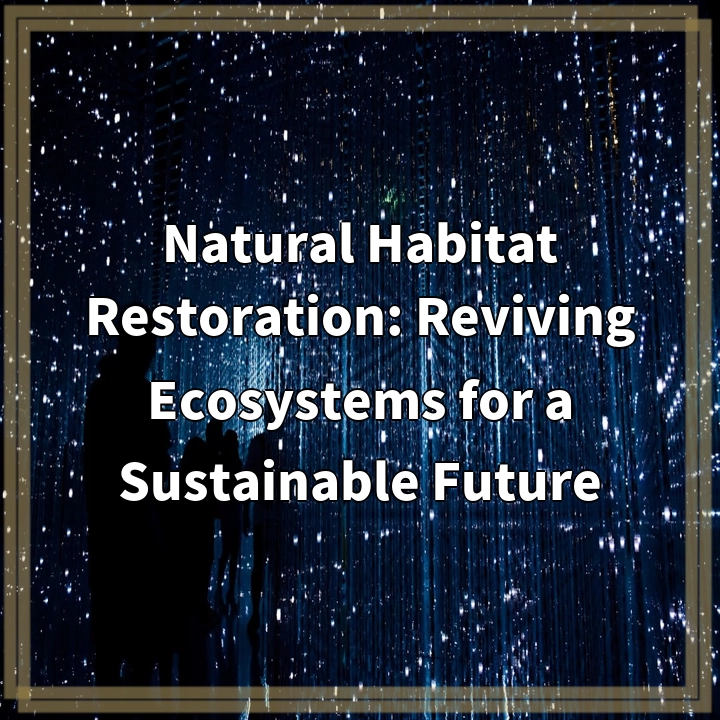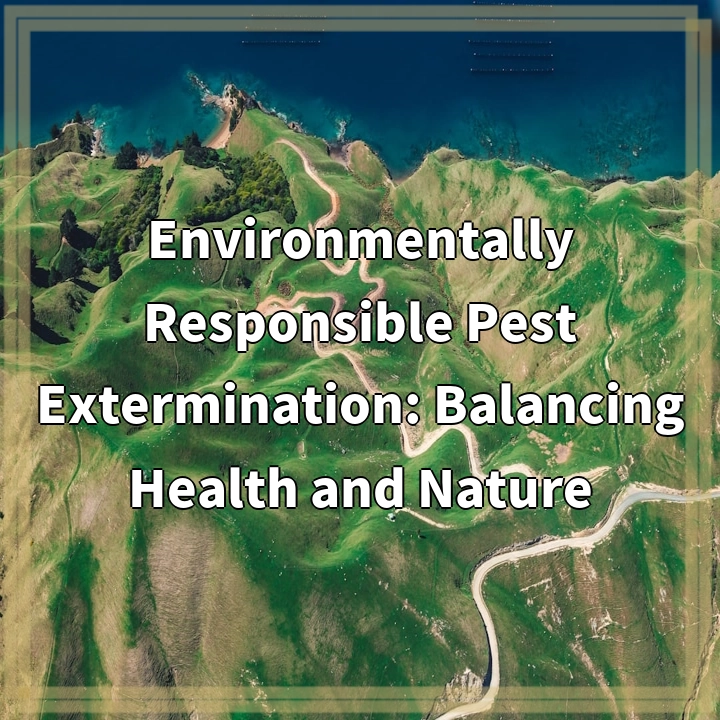
What it is:
Natural habitat restoration refers to the process of reviving and rehabilitating ecosystems that have been degraded, damaged, or destroyed due to human activities or natural disasters. This involves re-establishing the natural characteristics, functions, and biodiversity of an ecosystem, thus promoting a healthier environment and enhancing the resilience of wildlife populations. Restoration efforts can range from planting native vegetation, removing invasive species, to rehabilitating entire ecosystems, including wetlands, forests, and grasslands.
Benefits of Natural Habitat Restoration
Restoring natural habitats plays a critical role in supporting biodiversity, mitigating climate change, and improving ecosystem services. Healthy ecosystems can better regulate water and air quality, provide habitat for wildlife, and sequester carbon. Furthermore, these restoration efforts can enhance recreational opportunities and contribute to the wellbeing of local communities.
Real-World Problems Associated with Natural Habitat Restoration
Despite its benefits, natural habitat restoration faces numerous challenges in the real world. Understanding these problems is essential for developing effective strategies for restoration efforts.
Loss of Biodiversity
One of the most pressing issues is the ongoing loss of biodiversity. Many ecosystems have been so severely altered that they struggle to support the variety of species that once thrived there. The extinction of species not only alters the ecosystem’s balance but also reduces its resilience, making it harder to restore.
Funding and Resources
Restoration projects often require significant financial investments, which can be a barrier to implementation. Securing funding is a major challenge, particularly when competing with urgent social needs or other environmental priorities. Limited resources also mean that restoration efforts may not be as thorough or widespread as needed.
Climate Change Impacts
Climate change poses a significant challenge to natural habitat restoration. Altered weather patterns, rising sea levels, and increasing temperatures can hinder the success of restoration projects. Species that were once suitable for a habitat may no longer thrive there, requiring adaptive management strategies that are often complex and resource-intensive.
Community Engagement
Successful restoration requires the support of local communities, which can sometimes be challenging to achieve. Conflicts may arise over land use, and if local populations do not see the benefits of restoration projects, they may resist or undermine these efforts. Effective engagement strategies are essential to ensure community buy-in and participation in restoration initiatives.
Invasive Species
The presence of invasive species can greatly complicate restoration efforts. These non-native species often outcompete native flora and fauna, making it difficult to re-establish the original ecosystem. Removal of invasive species can be labor-intensive and costly, adding another layer of complexity to restoration projects.
Lack of Scientific Knowledge
Restoration science is still an evolving field, and there may be gaps in knowledge regarding the best practices for specific ecosystems. A lack of evidence-based methodologies can lead to unsuccessful restoration efforts. Continued research is necessary to improve our understanding of ecosystem dynamics and the most effective restoration techniques.
In summary, while natural habitat restoration is a critical endeavor for improving ecosystems and supporting biodiversity, it is accompanied by a variety of complex challenges that need to be addressed through innovative approaches, community engagement, and continued research.

Solutions to Natural Habitat Restoration Challenges
Addressing the various challenges associated with natural habitat restoration requires a multifaceted approach that incorporates innovative strategies, community involvement, and ongoing research. Below are some effective solutions to the problems discussed.
Enhancing Biodiversity
The first step towards successful habitat restoration is to focus on enhancing biodiversity. This can be achieved by prioritizing the reintroduction of native species and creating conditions that facilitate their growth and survival. Utilizing seed banks and local nurseries can help ensure that the right species are chosen for each specific restoration project.
Securing Funding and Resources
To overcome funding challenges, it is crucial to identify a diverse range of funding sources, including government grants, nonprofit organizations, and private sector partnerships. Crowdfunding and community fundraising initiatives can also be effective in garnering local support and financial contributions for restoration projects.
Adapting to Climate Change
Climate change adaptability is key in restoration efforts. Implementing adaptive management practices that allow for flexibility in response to changing conditions can improve the resilience of restored habitats. This involves continuous monitoring of ecosystems and being prepared to adjust restoration goals based on new data and climate forecasts.
Community Engagement and Education
Engaging local communities is vital for the success of restoration projects. Creating educational programs that raise awareness about the benefits of restoration can foster greater community support and participation. Collaborating with community organizations and local leaders can also help align restoration goals with the needs and values of the community.
Managing Invasive Species
Effective management of invasive species is crucial for successful restoration. Developing targeted removal strategies and monitoring programs can help control invasive populations. Educating local communities about the impacts of invasive species and involving them in removal efforts can also be beneficial.
Advancing Restoration Science
To address knowledge gaps in restoration practices, ongoing research is essential. Collaborating with universities, research institutions, and local conservation organizations can help develop and disseminate best practices for restoration. Additionally, promoting citizen science initiatives can encourage public participation in data collection and monitoring, enhancing our understanding of ecosystem dynamics.
By focusing on these solutions, we can effectively tackle the challenges of natural habitat restoration, ultimately leading to healthier ecosystems and a sustainable future.















